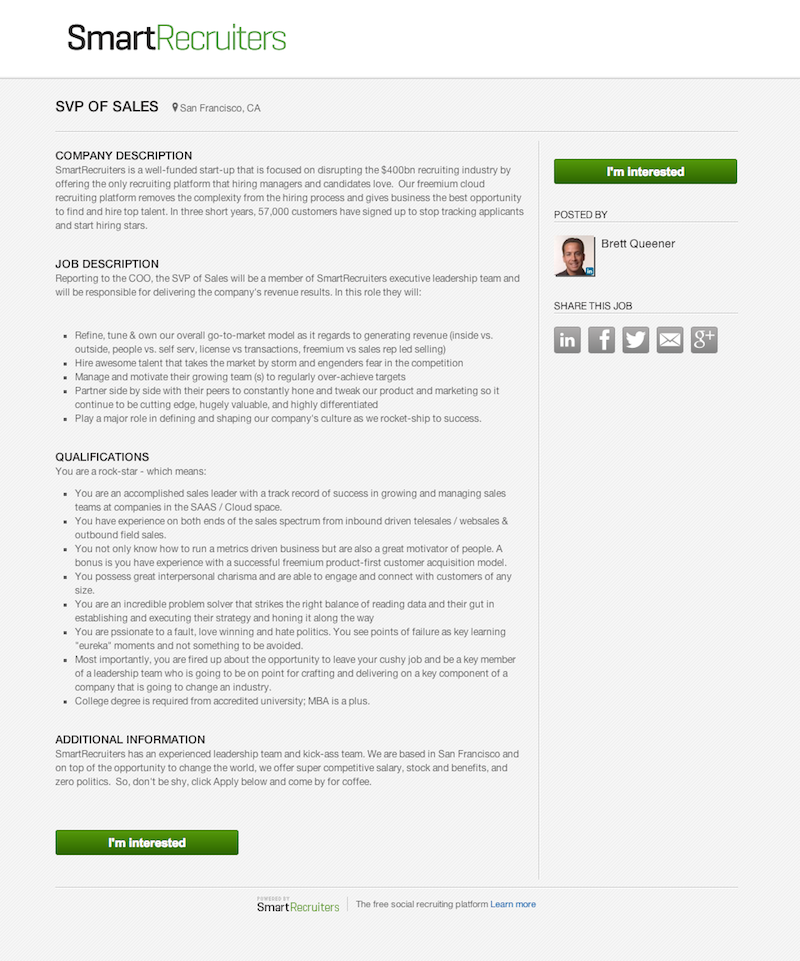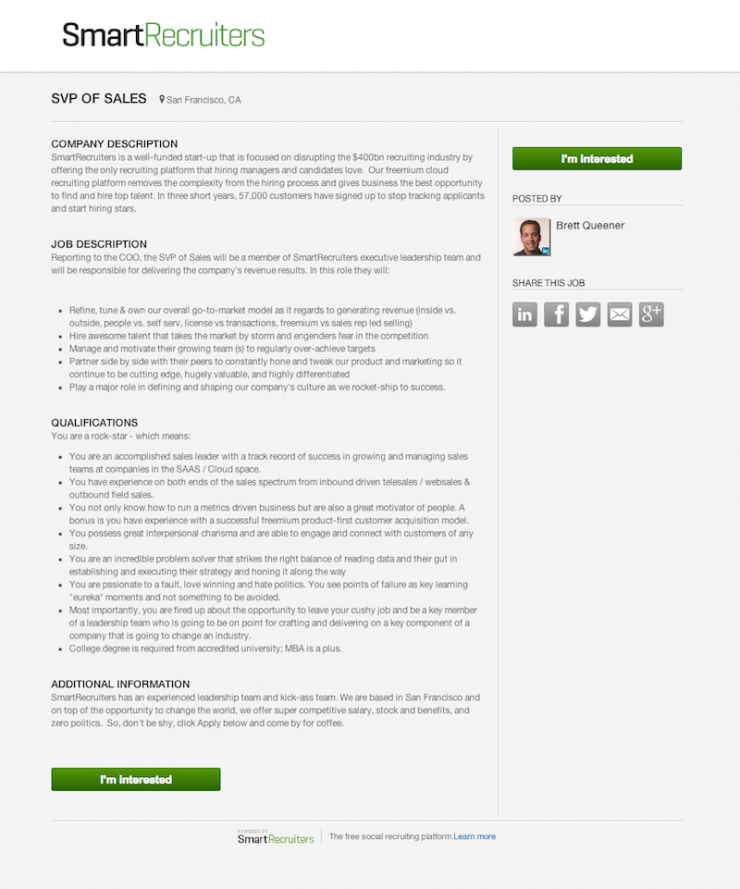Take a look at almost any job board and you will see countless job ads that are boring, long-winded, and lacking in persuasive power. Because instead of job advertisements, they are job descriptions, taken straight from internal documents written by a HR generalist. A job description is designed to describe the role and duties of a particular job – not to persuade a potential employee to apply for it.
The purpose of a job ad is to persuade a candidate to act. It’s really that simple. An employer can run job ads in the most targeted, focused location on the web, but if the ads are not persuasive, the results will be disappointing. In other words, the work of a job ad is to turn paid and organic traffic (i.e., candidates) into qualified applicants.
The first step in building a modern and scientific recruiting program is creating a job ad that works. It must function at both a persuasive level and a technical level. Thus, it must encourage candidates to respond, and it must contain the keywords and phrases that allow data-driven tools to analyze and predict where it will function best.
 Job Ad Criteria:
Job Ad Criteria:
So how does the employer build the perfect job ad? Every ad has key components that must be present for it to work properly. These are:
1. Job Title: This is not a place for quirkiness or excessive creativity (unless you are in THE quirkiest or most creative brands) – instead, the employer should use the most precise and widely understood job title for the position. Don’t use ‘People Motivator in Chief’ – even if management is love with it. Instead, use ‘VP of HR’. Exact and to the point – the employer needs to get the message across, and needs to ensure that the candidates searching for it can find it.
2. Who We Are (Company Description): A simple, to-the-point sentence about the company – what it does, what it’s like, why it’s great.
3. What We Need (Job “Description”): A detailed explanation of what the position entails – but written in a persuasive way; after all, the employer wants the candidate to respond! The description should also include any specific experience, certifications, qualifications, and other requirements that are ‘must-haves’. In additional to absolute requirements, it’s a good idea to include skills or qualifications that would be nice (even if they aren’t essential). Help the reader understand as much as possible about what an ideal candidate is. And remember – search engines rely on keywords and phrases to index the ad and bring it to the searcher. Be sure to include the best ones.
4. What You Should Do (1 Click Apply): Tell the candidate what he/she must do to learn more or apply for the position. Click the “I’m Interested” button? The employer should be clear and specific. If there is a ‘Respond by’ date, it should be included.
These are the components of a modern, persuasive, and effective job ad. But there is one more potential barrier to success that you should be aware of: the overly-long application form. Job boards have identified ‘drop-off’ rates of 50-80% from when the candidate clicks the Apply button to when he/she completes the final step of the application form on the company site. Why? Many qualified candidates simply give up when confronted with applicant tracking systems that require filling out 10, 20, or even 40 pages of information before applying for a single job. The job application forms of old school ATS systems are reported to average 44 minutes. Employers should always keep the application process as simple and streamlined as possible in order to retain candidates.
Sometimes, however, a job may require very specific skills or knowledge – and it may also be attractive to a wide range of candidates. In this case, the employer may want to utilize screening questions to cull out the unqualified applicants. A few screening questions can be far more effective at limiting applicants than simply letting an excessively long ATS process scare them away, but you do have to remember that every screening questions generally increase candidate drop off, so ask them wisely…
This is an excerpt from a SmartRecruiters White Paper, “The Evolution of Job Posting.” Read the entire White Paper here. Or request a demo.
















